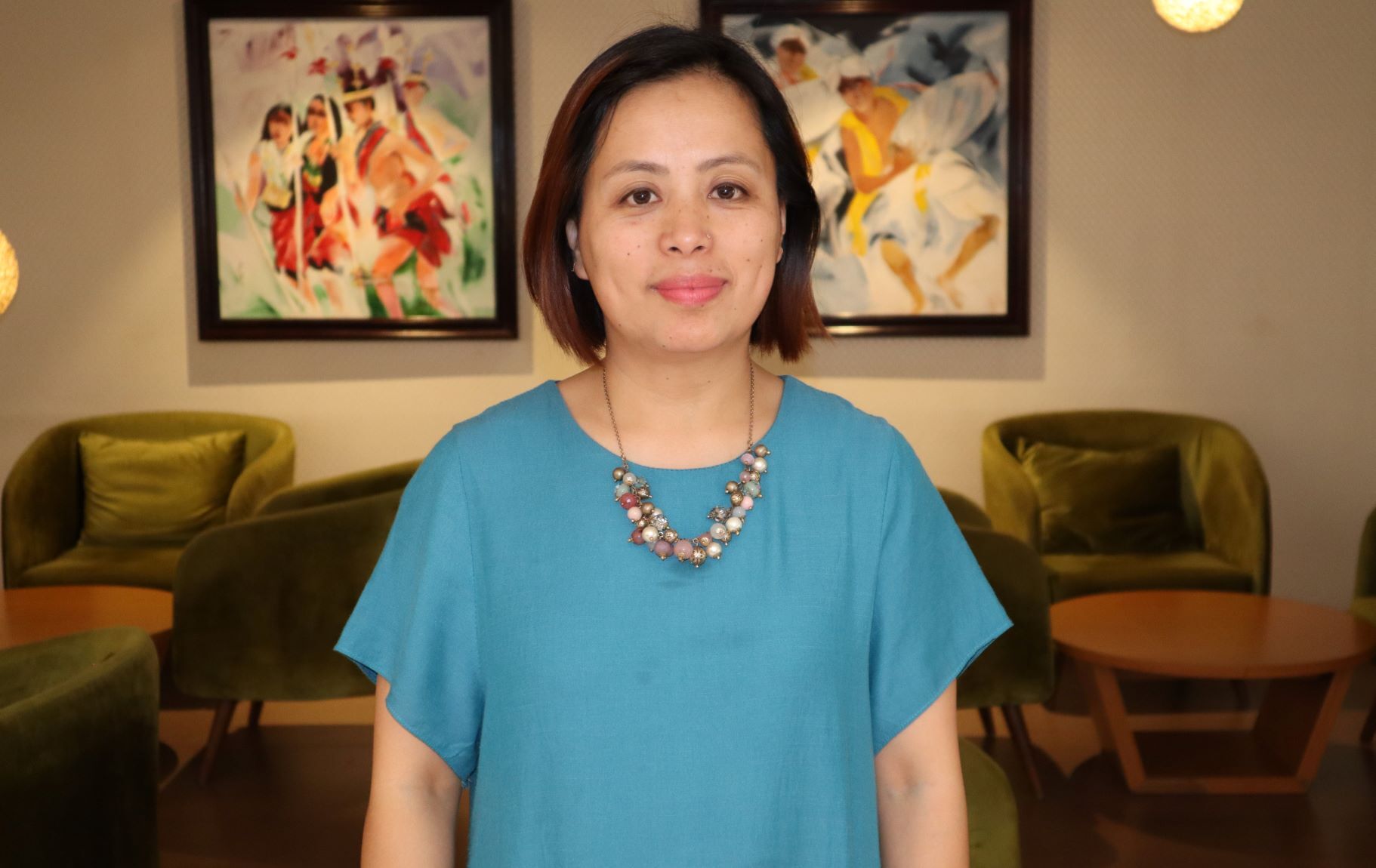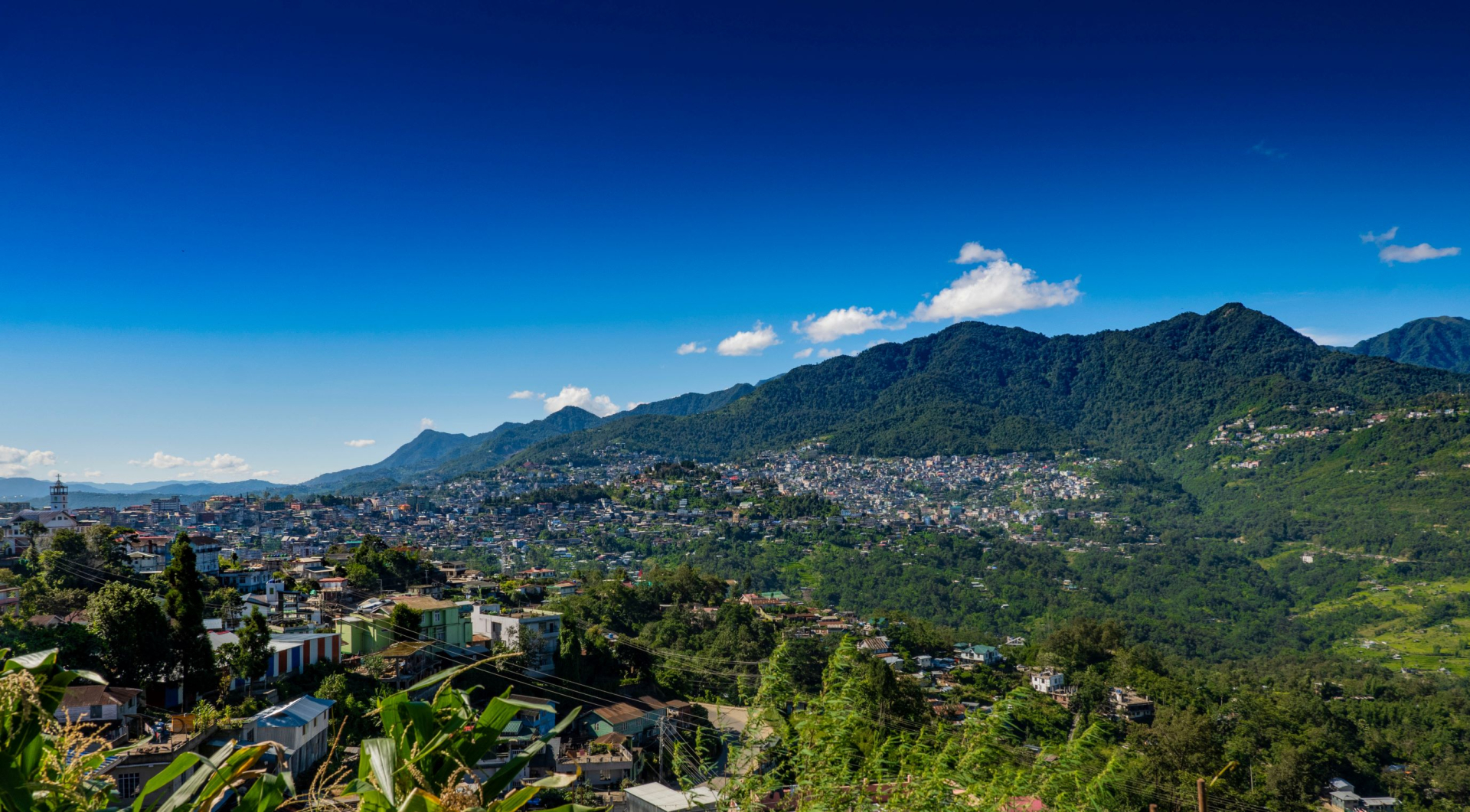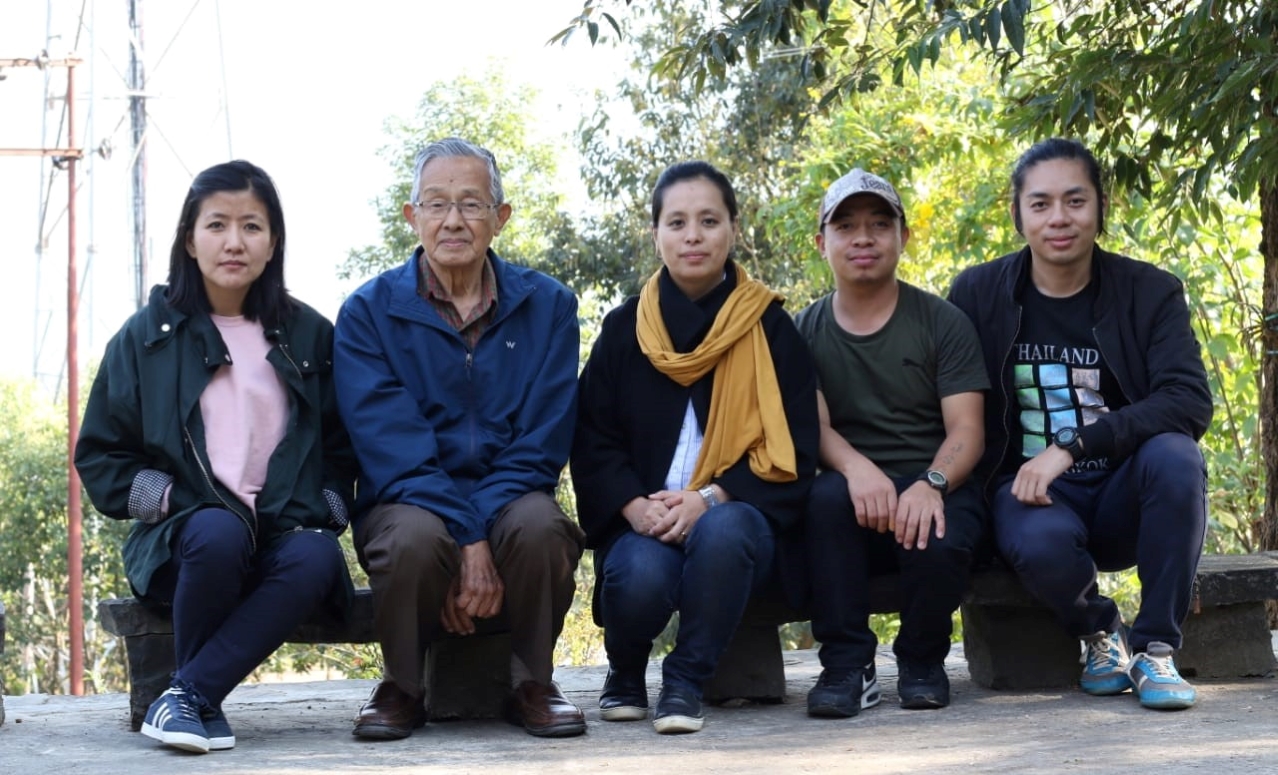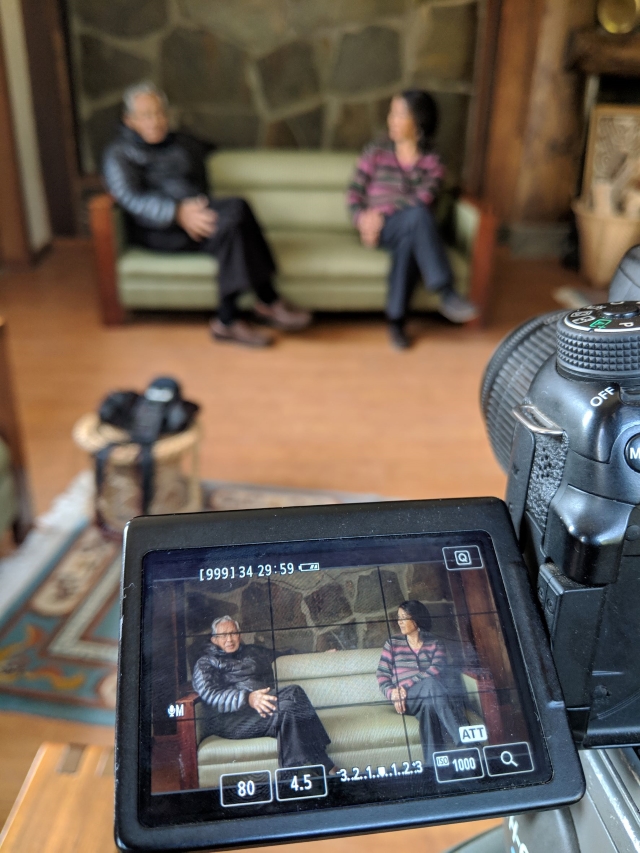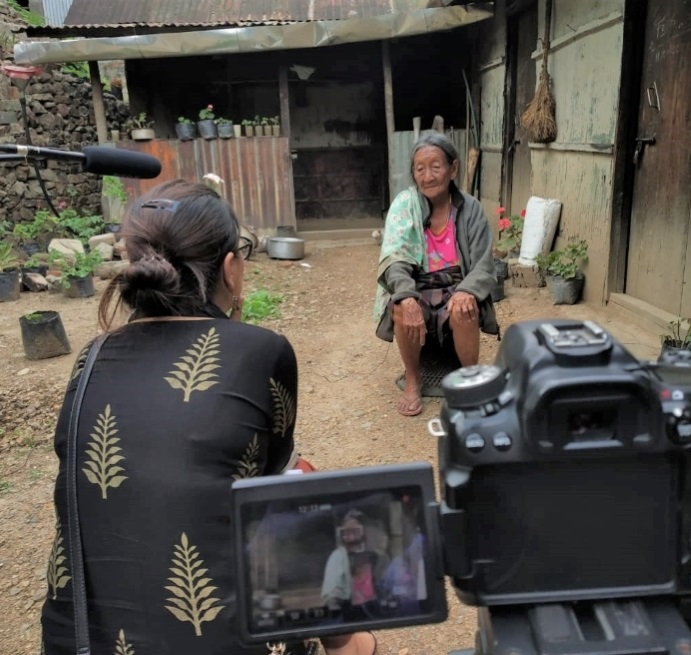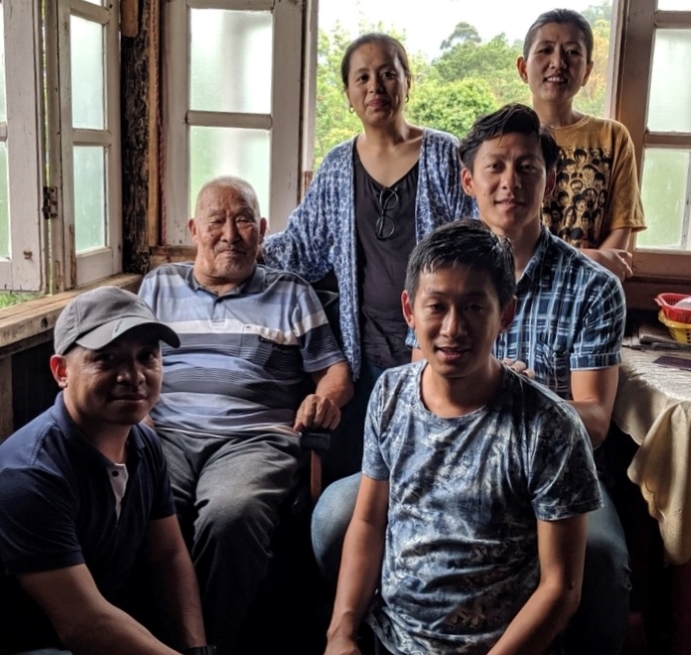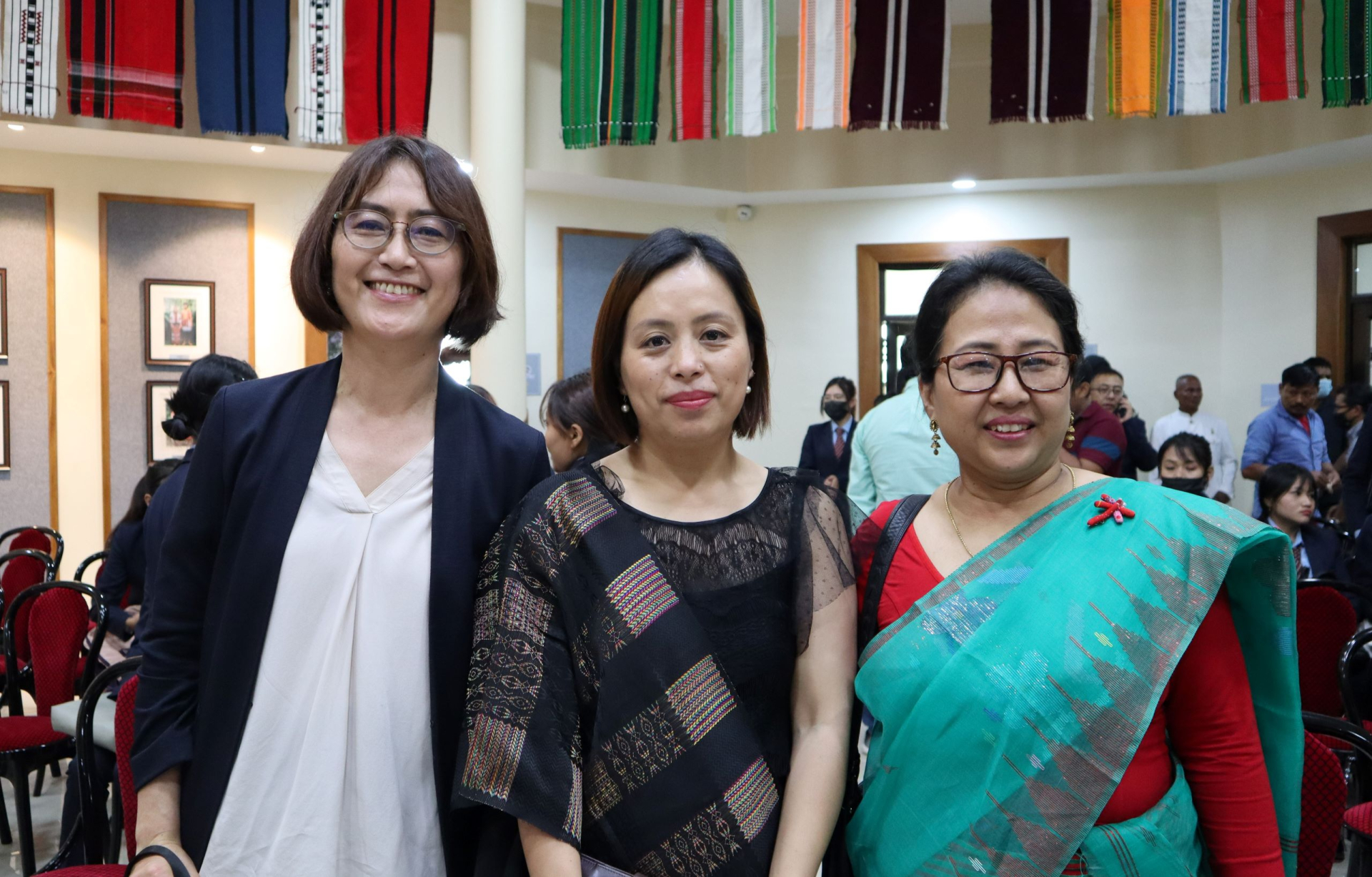As a young mother in 2014, I could no longer travel as much as I wanted or disappear for weeks. I wondered how I could still make films, take care of my baby, and keep my family together. That’s when my production company TakeOne was conceived.
With TakeOne, we now have experts in every field, including audio engineers, cinematographers, scriptwriters, and editors. I wanted to nurture and train people, and together we could produce films and tell our stories through films.
For me, after studying cinema, the way I saw things in Kohima – the mountains, the valleys, and colors – everything had changed. When I came back to Kohima, the industry was so small. Now, almost 20 years later, I see the arts sprouting everywhere and so many people doing video production, films, and music videos. I think many younger artists now realize the importance of understanding where we come from, of preserving our arts and culture, and supporting each other locally. I am so grateful that I got to witness this transition for myself, and it was so beautiful to see.
You’ve been working on recording the testimonies from the Battle of Kohima, with the support of SPF and The Nippon Foundation, along with your team at TakeOne. How did you become interested in this project, and how did you come to work with SPF?
The first production journey with SPF started when I heard that the foundation had invited Niketu Iralu to come to Japan and wanted someone to film the journey. Niketu has been doing so much for the Nagas, because we’ve had years of conflict not just with India, but within ourselves. He believes in something called “the still small voice,” which is the voice in you, your conscience. He encourages people to listen to each other. In fact, his house is called “Kerünyüki,” which means house of listening.
